Indoor Gardening Tips for Winter Months
Discovering effective strategies to maintain a thriving indoor garden during the winter season can feel like a daunting task. The cold months often bring challenges such as reduced light, dry air, and potential pest invasions. However, with the right knowledge and techniques, you can keep your indoor plants not just alive, but flourishing. Think of your indoor garden as a cozy retreat during the harsh winter months; it can bring a splash of color and life into your home, making the season feel a little less bleak. In this guide, we will cover essential tips for plant care, light management, and pest control to ensure your indoor plants thrive, even when the temperatures drop outside.
Selecting plants that thrive indoors during winter is crucial for maintaining a vibrant indoor garden. Not all plants are created equal when it comes to handling lower light and humidity levels. For instance, consider incorporating resilient varieties such as snake plants, ZZ plants, or pothos. These plants are not only hardy but also require minimal care, making them perfect for the winter months. When choosing your plants, think about their specific needs, and how they will fit into your indoor environment. Remember, a well-chosen plant can be like a good friend in your home, adding warmth and companionship during the coldest months.
Proper lighting is essential for indoor plants during winter. With shorter days and less natural sunlight, you may need to get creative with your lighting solutions. Natural light can be a fickle friend in winter, so understanding how to supplement it with artificial light sources is key. You might want to consider using grow lights, which can provide the necessary energy your plants need to thrive. These lights come in various types, including fluorescent, LED, and incandescent, each with its own advantages. The right lighting can be the difference between a thriving garden and a sad collection of wilting leaves.
Each plant has specific light needs, and understanding these requirements is paramount for healthy growth. To assess your plants' needs, observe their behavior. Are they stretching towards the light? Are their leaves turning yellow? These can be signs that they need more light. Adjusting their positioning to optimize light exposure can be as simple as moving them closer to a window or rotating them regularly. Just like us, plants need their daily dose of sunshine to thrive!
When it comes to lighting, there are benefits and drawbacks to both natural and artificial sources. Natural light is free and creates a more authentic growing environment, but it can be inconsistent during winter. On the other hand, artificial light provides a reliable source of energy, but it may require an initial investment. To find the best strategy for your indoor garden, consider a combination of both. This hybrid approach can help ensure your plants receive adequate light throughout the winter months.
Learning how to use grow lights effectively involves understanding placement, duration, and intensity. Generally, grow lights should be placed about 6-12 inches above your plants, and they should be on for about 12-16 hours a day. Adjusting the intensity can also make a significant difference; too much light can cause leaf burn, while too little can stunt growth. Think of grow lights as the sun on a winter day—providing that much-needed warmth and energy to help your plants flourish.
Watering needs change in winter due to reduced evaporation rates. It’s essential to adjust your watering schedule and techniques to prevent overwatering, which can lead to root rot. A good rule of thumb is to check the top inch of soil; if it feels dry, it’s time to water. Remember, it’s better to underwater than overwater during these months. Think of your plants as sponges—they can only absorb so much moisture before they start to feel overwhelmed!
The winter air can be notoriously dry, which can negatively affect plant health. Maintaining humidity levels is crucial for your indoor garden. You can achieve this by using humidifiers, placing trays of water near your plants, or grouping plants together to create a microclimate. Each of these methods can help raise humidity levels, making your indoor garden a more favorable environment for your leafy friends.
When you maintain increased humidity, you’re not just preventing dryness; you’re also enhancing plant health and growth. Increased humidity can lead to better nutrient absorption and overall vigor. Your plants will thank you for it by growing lush and vibrant, making your indoor space feel alive and inviting.
Recognizing signs of low humidity is critical for plant care. Watch for symptoms such as brown leaf tips, drooping leaves, or increased pest activity. These can indicate that your plants are struggling in the dry winter air. By staying vigilant and adjusting your humidity levels, you can prevent these issues before they escalate.
Pests can thrive indoors during winter, taking advantage of the cozy environment you’ve created for your plants. Effective pest management strategies are essential to keeping your indoor garden healthy and pest-free. This includes regular inspections of your plants, as well as implementing natural remedies and preventive measures.
Learning to identify common indoor pests like spider mites, aphids, and mealybugs can save your garden from significant damage. Understanding these pests will empower you to take appropriate action before they become a larger problem. Regularly check the undersides of leaves and the stems for any signs of infestation.
Implementing preventive measures is key to avoiding pest infestations. Best practices include maintaining a clean garden environment, removing dead leaves, and ensuring good air circulation. Think of your indoor garden as a fortress; with the right defenses in place, you can keep those pesky invaders at bay!
- What are the best indoor plants for winter? Some of the best indoor plants for winter include snake plants, ZZ plants, and pothos.
- How often should I water my indoor plants in winter? Check the top inch of soil; if it feels dry, it’s time to water. Generally, watering every 1-2 weeks is sufficient.
- How can I increase humidity for my indoor plants? You can use a humidifier, place trays of water near your plants, or group plants together.
- What are signs of low humidity in indoor plants? Look for brown leaf tips, drooping leaves, or increased pest activity.
- How can I prevent pests in my indoor garden? Regular inspections, maintaining cleanliness, and ensuring good air circulation are effective preventive measures.
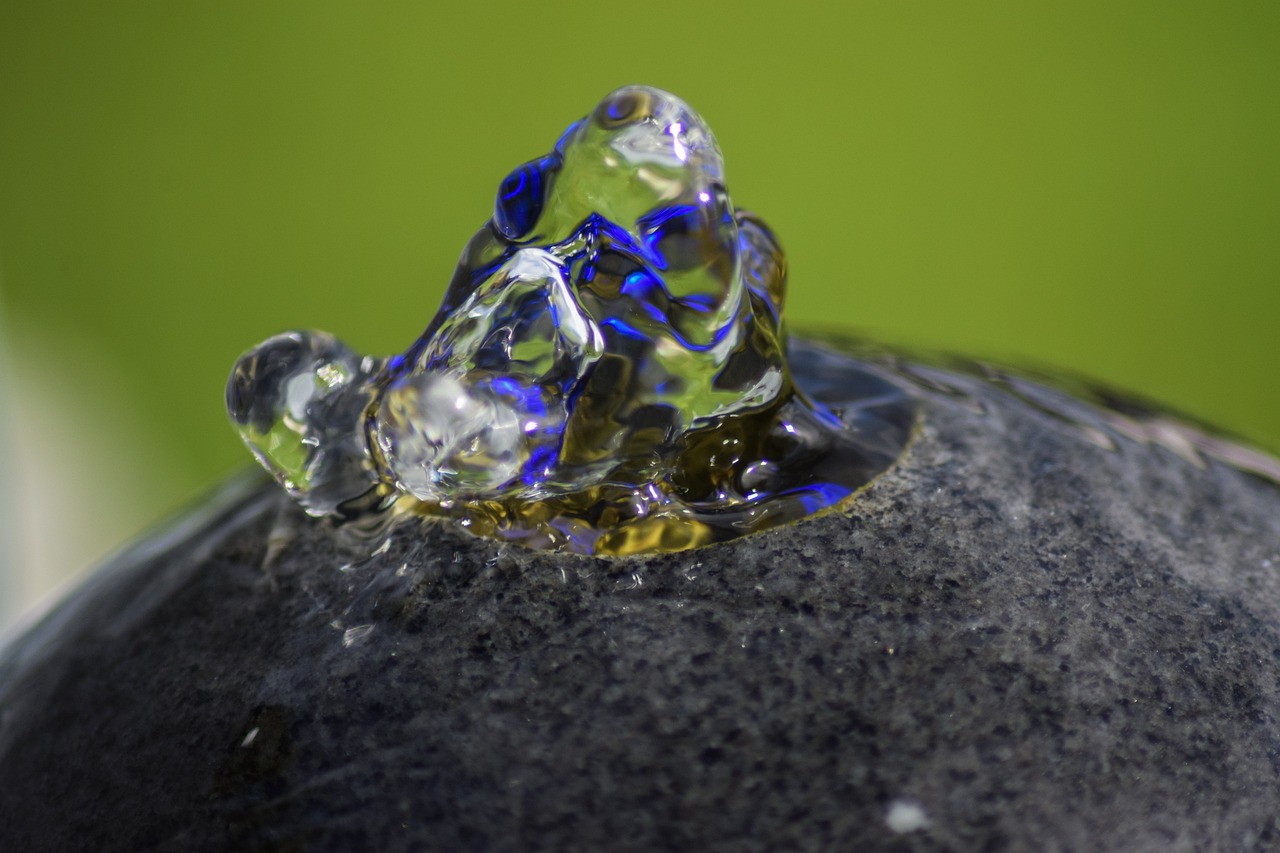
Choosing the Right Indoor Plants
When it comes to indoor gardening during the winter months, selecting the right plants is crucial for success. Not all plants can thrive in the lower light and humidity conditions typical of winter. Therefore, it's essential to choose varieties that are not only resilient but also capable of bringing life and color to your indoor space. Some plants, like the Snake Plant and Pothos, are forgiving and can adapt well to the indoor environment, making them perfect choices for those chilly months.
In fact, choosing the right plants can be likened to selecting the right ingredients for a delicious recipe. Just as you wouldn’t use stale ingredients to bake a cake, you shouldn’t opt for plants that won’t flourish indoors during winter. Consider the following factors when making your selection:
- Light Requirements: Some plants need bright light, while others thrive in low light. Knowing your space's lighting conditions is key.
- Humidity Tolerance: Plants that can withstand lower humidity levels will fare better during the dry winter months.
- Growth Rate: Opt for plants with slower growth rates during winter, as they will require less maintenance.
Here’s a quick overview of some excellent indoor plants for winter:
| Plant Name | Light Requirement | Humidity Preference |
|---|---|---|
| Snake Plant | Low to Bright Indirect | Low |
| Pothos | Low to Bright Indirect | Moderate |
| ZZ Plant | Low to Bright Indirect | Low |
| Spider Plant | Bright Indirect | Moderate |
By selecting the right plants, you can create a vibrant indoor garden that not only survives but thrives during the winter months. Imagine walking into a room filled with lush greenery, even when the world outside is covered in snow. It’s not just about aesthetics; it’s about creating a sanctuary that lifts your spirits during the darker days of winter.
So, as you plan your indoor garden, keep in mind that the right choices can make all the difference. Embrace the challenge of winter gardening, and you'll be rewarded with a flourishing indoor oasis that brings joy and vitality into your home.
Q: What indoor plants are best for beginners during winter?
A: Some great options for beginners include Snake Plants, Pothos, and ZZ Plants, as they are low-maintenance and adaptable.
Q: How do I know if my indoor plants are getting enough light?
A: If your plants are stretching towards the light or showing signs of leggy growth, they may need more light. Conversely, yellowing leaves can indicate too much direct sunlight.
Q: Can I grow herbs indoors during winter?
A: Yes! Many herbs like basil, mint, and parsley can thrive indoors with sufficient light and humidity control.
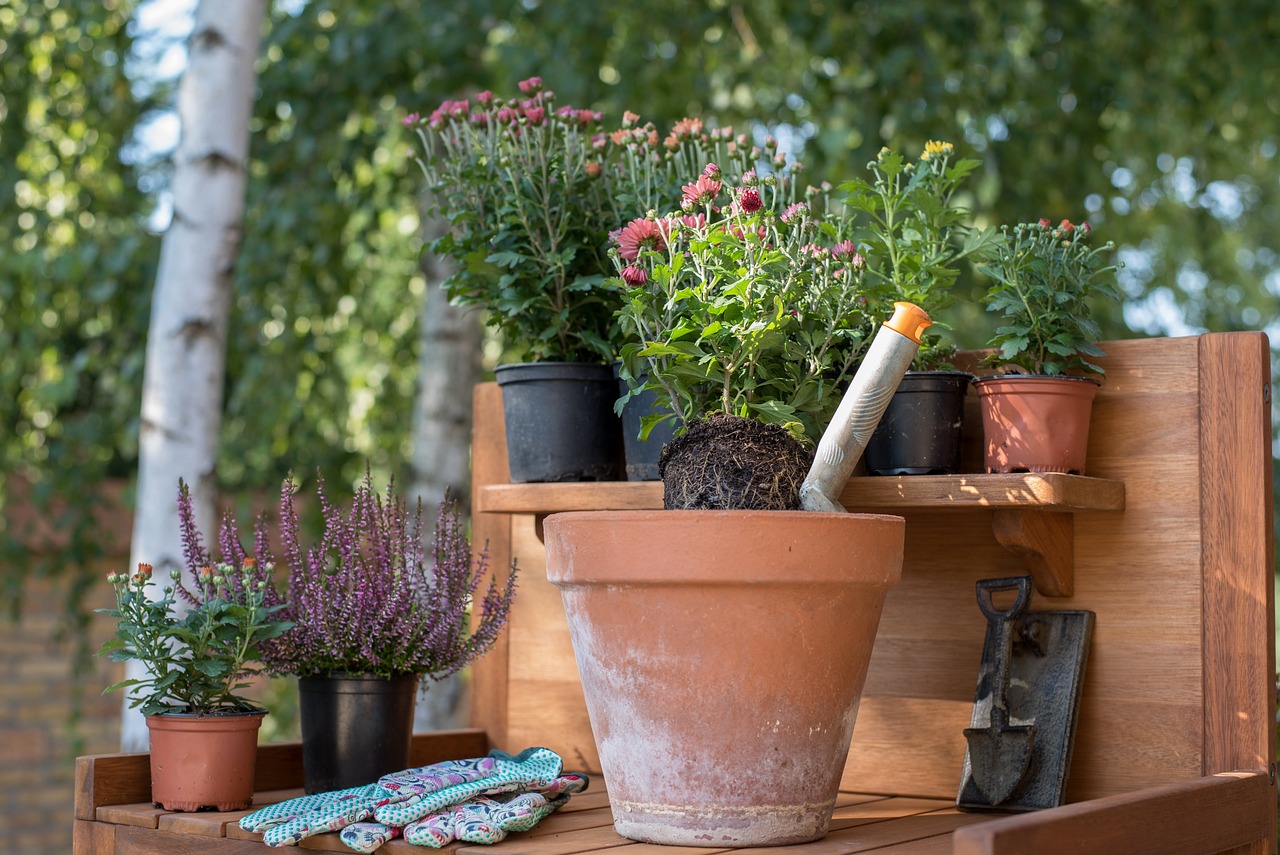
Lighting Solutions for Indoor Gardens
When it comes to keeping your indoor garden thriving during the winter months, lighting plays a pivotal role. The shorter days and reduced sunlight can leave your plants feeling a bit neglected, but fear not! With the right lighting solutions, you can ensure your plants receive the energy they need to grow strong and healthy. So, how do you go about it? Let’s explore some effective strategies to illuminate your indoor oasis.
First, it's essential to understand that not all plants have the same light requirements. Some may bask in bright light, while others prefer a more subdued glow. To simplify things, you can categorize your plants based on their light needs:
| Light Requirement | Examples of Plants |
|---|---|
| Low Light | Snake Plant, ZZ Plant |
| Medium Light | Pothos, Spider Plant |
| Bright Light | Succulents, Cacti |
Once you know your plants’ needs, you can start experimenting with different lighting solutions. Natural light is always a great option, but it can be inconsistent during winter. Positioning your plants near windows that receive the most sunlight can help, but sometimes it just isn’t enough. This is where artificial lighting comes into play.
Now, let’s dive into the two main types of artificial lighting:
- Fluorescent Lights: These are energy-efficient and provide a good spectrum of light for plant growth. They are particularly effective for seedlings and low-light plants.
- LED Grow Lights: These lights are becoming increasingly popular due to their efficiency and longevity. They can be tailored to emit specific wavelengths that benefit plant growth, making them a versatile choice for all types of indoor gardens.
When using artificial lights, consider the following tips for optimal results:
- Placement: Position your lights about 12-24 inches above your plants, depending on the type of light used. This helps avoid burning your plants while still providing adequate illumination.
- Duration: Most indoor plants thrive with about 12-16 hours of light per day. Use a timer to ensure consistency.
- Intensity: Monitor your plants’ response to the light. If they start stretching towards the light source, it may indicate they need more intensity.
In conclusion, lighting is a crucial component of indoor gardening, especially during the winter months. By understanding your plants’ needs and utilizing the right lighting solutions, you can create a vibrant indoor garden that flourishes despite the cold outside. Remember, it’s all about finding the right balance to keep your green friends happy!
Q: How can I tell if my plants are getting enough light?
A: Look for signs of healthy growth, such as new leaves and vibrant color. If your plants are stretching towards the light or have pale leaves, they may need more illumination.
Q: Can I use regular light bulbs for my indoor plants?
A: While regular bulbs can provide some light, they are not as effective as fluorescent or LED grow lights. These specialized lights are designed to emit the right spectrum for plant growth.
Q: How often should I change the light bulbs?
A: It’s a good idea to replace fluorescent bulbs every 12 months and LED grow lights every 3-5 years to ensure your plants are receiving adequate light.
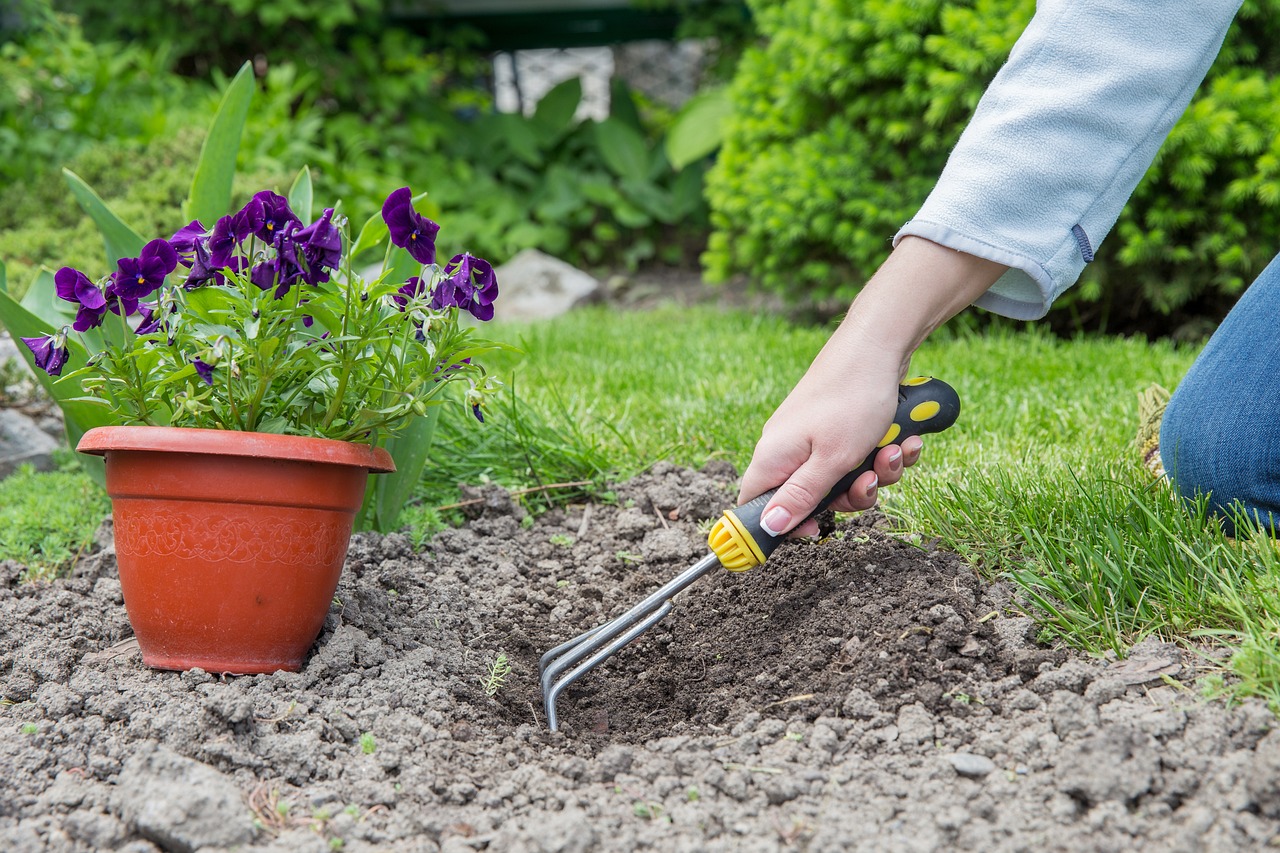
Understanding Light Requirements
When it comes to indoor gardening, understanding your plants' light requirements is like knowing the secret sauce to a delicious recipe. Just as every dish has its unique flavor profiles, each plant has its specific light needs to thrive. Some plants bask in bright, direct sunlight, while others prefer a more shaded, indirect approach. So, how do you figure out what your leafy friends crave?
First off, it's essential to assess the natural light conditions in your home. Take a moment to observe where the sunlight streams in throughout the day. Is it strong and direct in the morning, or does it filter through sheer curtains in the afternoon? Plants typically fall into three categories based on their light preferences:
- Low Light: These plants can survive in dimly lit spaces, making them perfect for areas away from windows. Examples include pothos and snake plants.
- Medium Light: These plants thrive in bright, indirect light. They enjoy a balance and can often adapt to various conditions. Think of spider plants and peace lilies.
- High Light: These sun-loving plants require direct sunlight for several hours a day. Cacti and succulents are prime examples of this category.
Once you've identified your plants' light needs, the next step is to position them strategically in your home. For instance, placing a high-light plant near a south-facing window can ensure it gets the sunlight it craves, while low-light plants can be comfortably situated in corners or on shelves. Remember, it's not just about where you place them, but also how you rotate them regularly. Just like us, plants can get a bit lopsided if they always face the same direction for their daily dose of sunlight!
Another factor to consider is the time of year. During winter months, the sun's angle changes, and daylight hours are shorter. This shift can significantly impact your indoor plants. You may need to adjust their positions or invest in supplemental lighting, like grow lights, to ensure they receive adequate light. Keep an eye on your plants; if they start stretching towards the light or their leaves become pale, it’s a clear sign they need more exposure.
In summary, understanding light requirements is crucial for the health of your indoor garden. By assessing your home’s natural light, categorizing your plants, and adjusting their positions throughout the seasons, you can create an environment where your indoor plants can flourish. Remember, a happy plant is a thriving plant, and with a little attention to their light needs, your indoor garden will be the envy of all.
Q: How can I tell if my plant is getting too much light?
A: Signs of too much light include scorched or brown leaf tips, faded colors, or leaves dropping. If you notice these symptoms, consider moving your plant to a spot with less direct sunlight.
Q: Can I use regular light bulbs for my indoor plants?
A: Regular incandescent bulbs can provide some light, but they generate a lot of heat, which can harm your plants. It's best to use LED grow lights or fluorescent bulbs designed for plant growth.
Q: How often should I rotate my plants?
A: Rotating your plants every couple of weeks can help them grow evenly and prevent them from leaning toward the light source. Just be gentle to avoid damaging the stems!
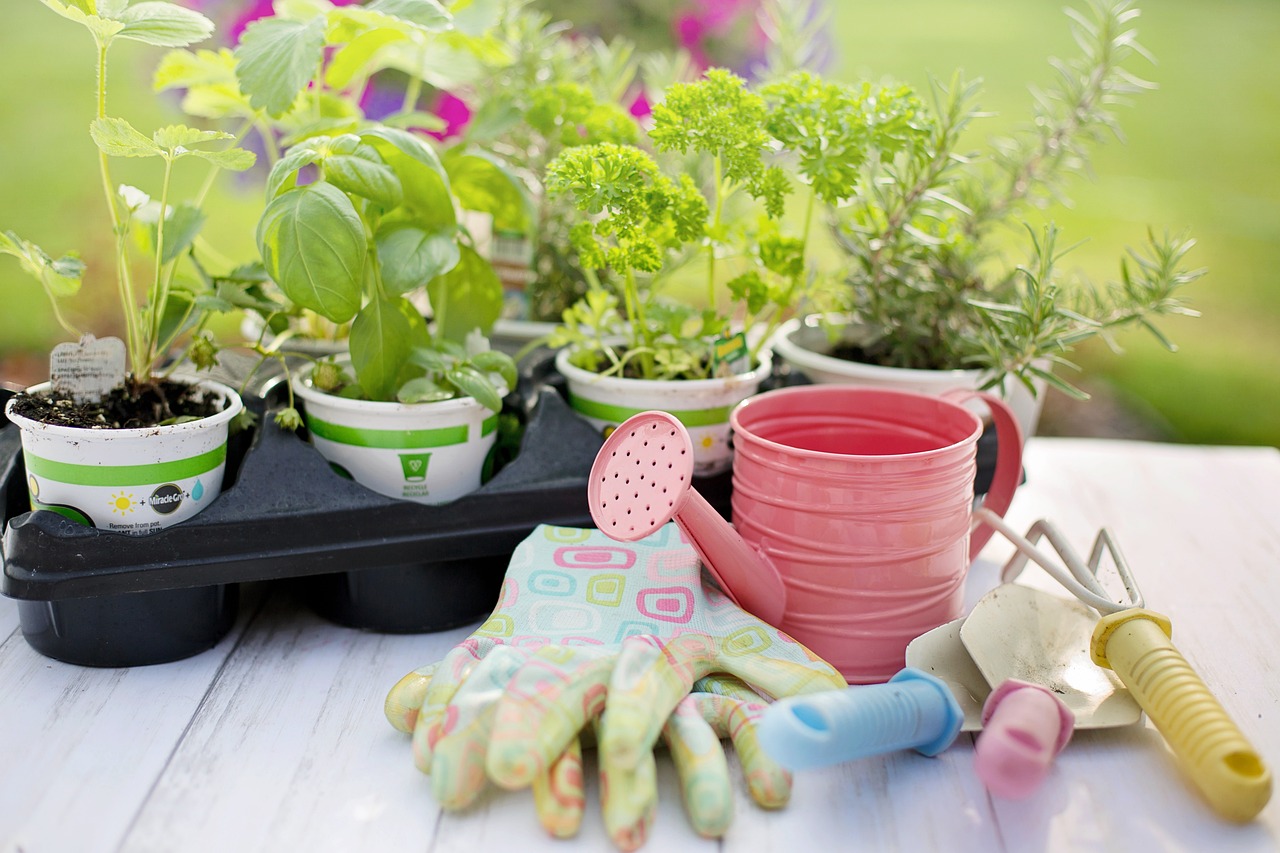
Natural Light vs. Artificial Light
When it comes to nurturing your indoor plants during the chilly winter months, one of the most pressing questions is whether to rely on natural light or to invest in artificial light. Both options have their unique benefits and drawbacks, and understanding these can help you make an informed decision that suits your indoor garden's needs.
Natural light, while free and abundant, can be quite limited in winter. The days are shorter, and the sun's angle is lower, which means your plants might not receive the adequate light they need to thrive. However, the warmth of the sun can create a cozy environment for your plants, and many species thrive in bright, indirect sunlight. If you have south-facing windows, you might find that your plants bask in the sun's rays, soaking up that vital energy. To maximize natural light exposure, consider:
- Rotating your plants regularly to ensure all sides receive light.
- Cleaning your windows to eliminate dust and grime that block sunlight.
- Using sheer curtains to diffuse harsh sunlight while still allowing light in.
On the flip side, artificial light can be a game-changer, especially during the dark winter months. Grow lights come in various types, such as fluorescent, LED, and incandescent, each with its own set of advantages. For instance, LED grow lights are energy-efficient and produce little heat, making them ideal for close placement to plants. However, they can be more expensive upfront compared to other options. Here’s a quick comparison:
| Type of Light | Advantages | Disadvantages |
|---|---|---|
| Natural Light | Free, provides warmth, and promotes natural growth cycles | Limited in winter, depends on weather conditions |
| LED Grow Lights | Energy-efficient, long-lasting, and adjustable | Higher initial cost |
| Fluorescent Lights | Cost-effective and sufficient for many plants | Less efficient than LEDs and may need replacement |
Ultimately, the choice between natural and artificial light depends on your specific circumstances. If you have access to ample sunlight, you might be able to rely on natural light alone, perhaps supplementing it with some artificial lighting on particularly gloomy days. Conversely, if your indoor garden is in a dimly lit area, investing in a good-quality grow light could be essential for keeping your plants healthy and vibrant.
So, which will it be? Are you ready to embrace the sun's warmth or harness the power of technology to keep your indoor garden thriving? The decision is yours, but remember that a combination of both might just be the secret ingredient for a flourishing indoor garden this winter!
- How often should I rotate my plants for optimal light exposure? It's best to rotate your plants every couple of weeks to ensure even growth.
- Can I use regular light bulbs for my indoor plants? While regular bulbs can provide some light, they may not be sufficient for plant growth. It's advisable to use specialized grow lights.
- What are the signs that my plants are not getting enough light? Look for signs such as leggy growth, yellowing leaves, or slow growth; these may indicate insufficient light.

Using Grow Lights Effectively
When it comes to indoor gardening, especially during the winter months, using grow lights effectively can be a game changer for your plants. Think of grow lights as the sun's little helpers, providing the essential light your indoor plants need to thrive when natural sunlight is scarce. But how do you harness their power without overwhelming your green friends? Let’s dive into some essential tips!
First off, placement is key. Position your grow lights at an appropriate distance from your plants. If they're too close, you risk burning the leaves; too far away, and your plants won't get enough light. A good rule of thumb is to keep the lights about 12 to 24 inches above the plants, depending on the type of light you’re using. For example, LED lights can be placed closer than fluorescent lights due to their lower heat output.
Next, consider the duration of light exposure. Most indoor plants thrive with about 12 to 16 hours of light per day. To make things easier, you can use a timer. This not only ensures your plants get consistent light but also saves you from the hassle of turning the lights on and off manually. Think of it as setting a bedtime for your plants—just like you would for a child.
Finally, let’s talk about intensity. Different plants have varying light requirements. For instance, succulents and cacti love bright light, while ferns prefer something a bit softer. It’s important to adjust the intensity of the grow lights based on the specific needs of your plants. If you’re unsure, you can always refer to a light meter, which will help you gauge the light levels in your indoor garden.
In summary, using grow lights effectively involves:
- Proper placement to avoid burning or insufficient light
- Setting a consistent duration with a timer
- Adjusting the intensity based on plant needs
Remember, the goal is to mimic the natural conditions as closely as possible. By following these guidelines, you can create a thriving indoor environment for your plants, even when the winter chill is outside!
Q: How do I know if my plants are getting enough light?
A: Look for signs like leggy growth or yellowing leaves, which can indicate insufficient light. If your plants seem to be stretching toward the light source, they might need a brighter spot or a more intense grow light.
Q: Can I use regular light bulbs instead of grow lights?
A: While regular light bulbs can provide some light, they often lack the full spectrum that plants need to thrive. Grow lights are specifically designed to cater to plant needs, making them a better choice for serious indoor gardeners.
Q: How often should I change my grow lights?
A: It’s recommended to replace fluorescent grow lights every 12 months and LED grow lights every 2-3 years, as their intensity diminishes over time.
By implementing these strategies and addressing common questions, you’ll be well on your way to mastering the art of using grow lights effectively this winter!
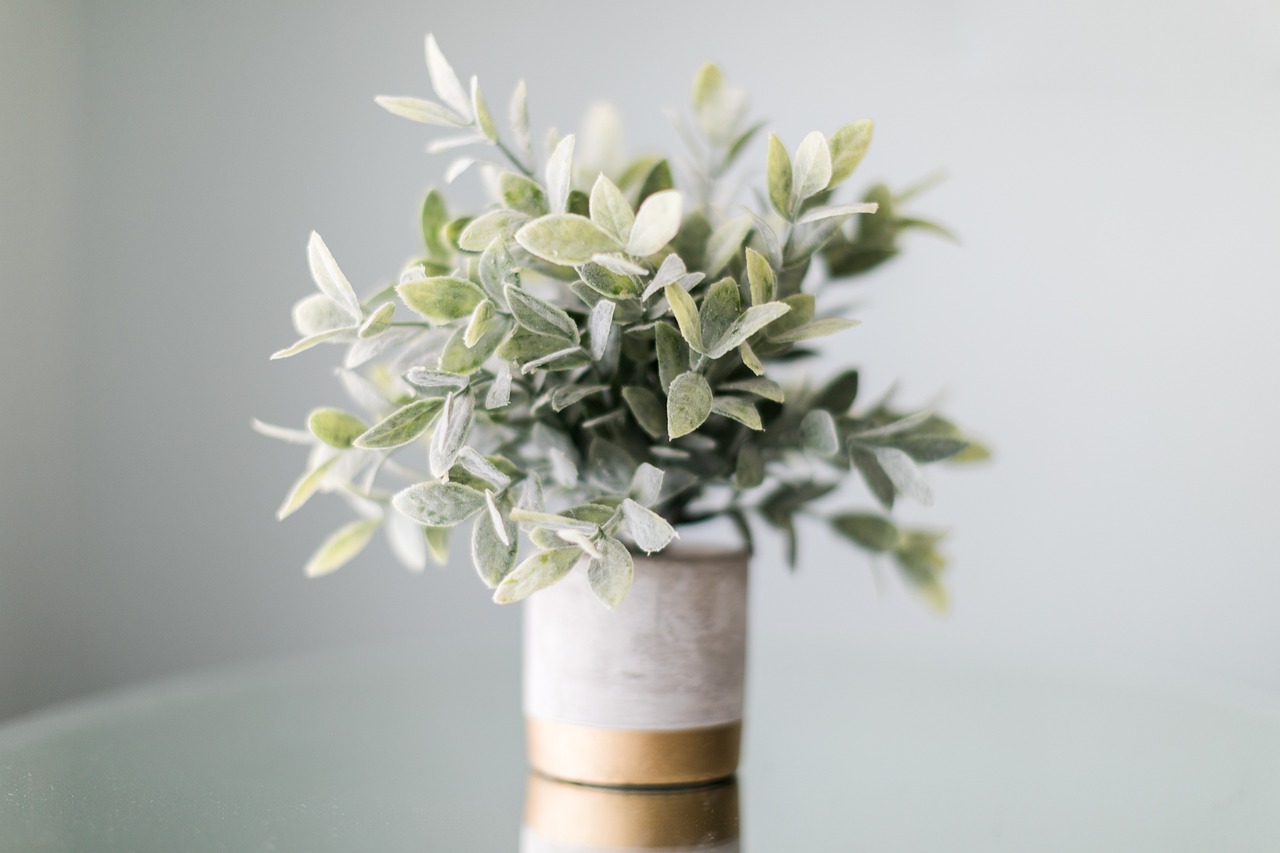
Seasonal Watering Techniques
As the winter months roll in, our indoor plants often require a change in care, particularly when it comes to watering techniques. With lower temperatures and reduced humidity, the water needs of your plants can shift dramatically. Understanding these changes is crucial to keeping your indoor garden healthy and thriving. So, how do you adjust your watering schedule to meet the needs of your plants during this chilly season?
First, it's essential to recognize that many indoor plants enter a period of dormancy in winter. This means they generally require less water than they would during the warmer months. Overwatering can lead to root rot, a common issue that can quickly kill your beloved plants. To avoid this, consider the following techniques:
- Check the Soil Moisture: Before watering, always check the soil moisture. Stick your finger about an inch into the soil; if it feels dry, it's time to water. If it’s still moist, hold off for a few days.
- Water Less Frequently: Depending on the type of plant, you may only need to water every two to three weeks during winter. Adjust your schedule based on the specific needs of each plant.
- Use Room Temperature Water: Cold water can shock the roots of your plants. Always use water that is at room temperature to ensure a smooth transition for your plants.
Another vital aspect of watering in winter is the method you choose. Instead of pouring water directly onto the leaves, which can lead to mold and mildew, try watering at the base of the plant. This allows the roots to absorb moisture directly and prevents any excess water from sitting on the leaves.
Additionally, consider using self-watering pots or moisture-retaining soil mixes that can help regulate the moisture levels in the soil. These can be particularly beneficial for those who might forget to check their plants regularly. By providing a consistent moisture level, you can help your plants thrive even if you’re not able to water them as frequently.
Lastly, always keep an eye on your plants for signs of distress. Yellowing leaves or wilting can indicate that your plant is either overwatered or underwatered. Adjust your watering schedule accordingly, and remember that each plant is unique. What works for one may not work for another, so be attentive and flexible!
Q1: How do I know if my plant needs water in winter?
A1: The best way to check is to stick your finger about an inch into the soil. If it feels dry, it's time to water.
Q2: Can I use cold water for my indoor plants?
A2: It's best to use room temperature water to avoid shocking the roots of your plants.
Q3: How often should I water my indoor plants during winter?
A3: Most indoor plants require less frequent watering in winter, typically every two to three weeks, but this can vary based on the plant type.
Q4: What are the signs of overwatering?
A4: Yellowing leaves, wilting, and a mushy stem can indicate overwatering. Adjust your watering habits if you notice these symptoms.
Q5: Are self-watering pots a good option for winter?
A5: Yes, self-watering pots can help maintain consistent moisture levels, making it easier to care for your plants during the winter months.
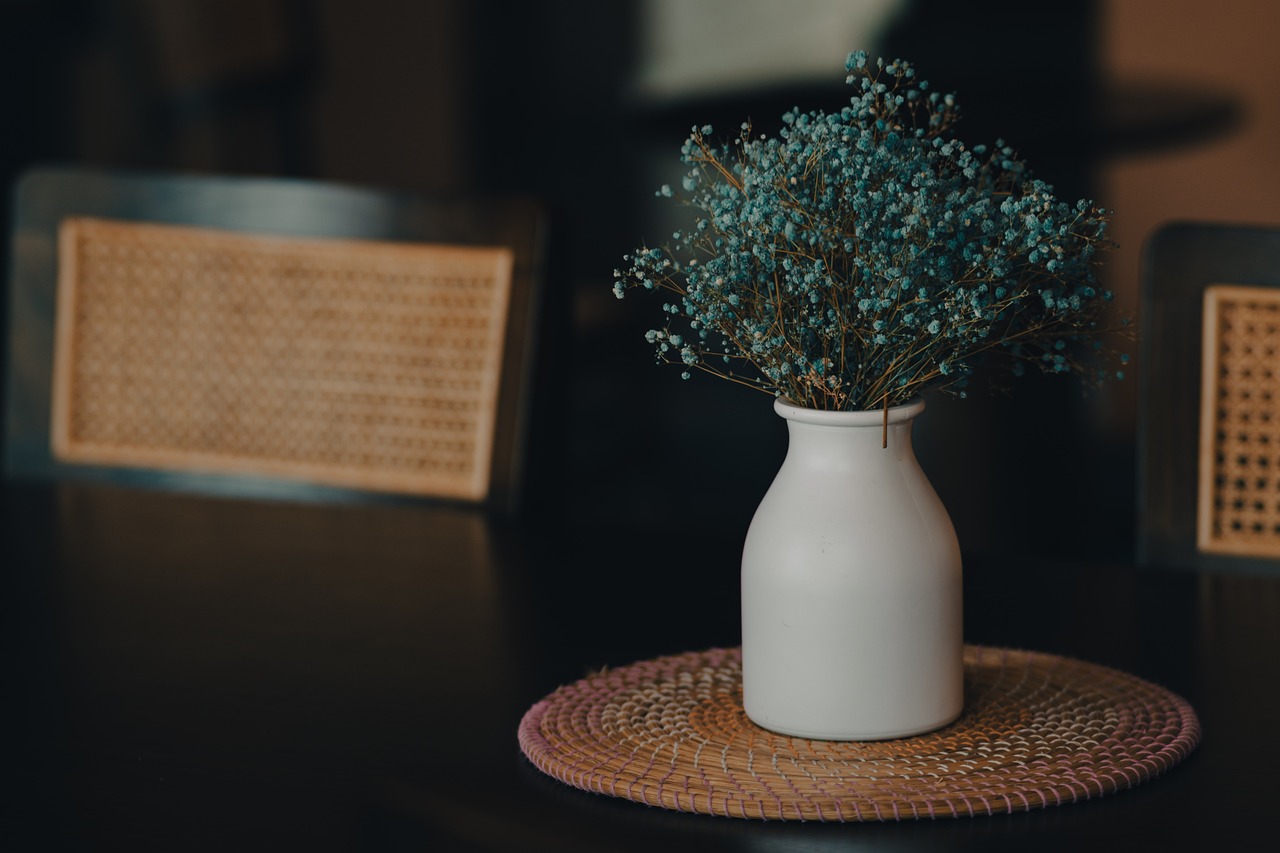
Humidity Control for Indoor Plants
Winter can be a tricky time for indoor gardeners. With the heating systems cranked up and the cold air seeping in, the humidity levels in our homes can plummet. This dry air can wreak havoc on our beloved plants, causing leaf drop, brown tips, and stunted growth. So, how do we combat this? Humidity control is essential for keeping your indoor plants healthy and thriving during these colder months. Let's dive into some effective strategies to maintain the right humidity levels.
One of the simplest ways to increase humidity is by using a humidifier. This device can help create a more favorable environment for your plants by releasing moisture into the air. If you don’t have a humidifier, don’t worry! You can also group your plants together. When plants are close to each other, they create their own microenvironment, which can help retain moisture. Think of it like a cozy gathering of friends, where the warmth and comfort of companionship keep everyone happy.
Another effective method is to place your plants on trays filled with water and pebbles. As the water evaporates, it increases the humidity around the plants. Just make sure the pots are sitting on the pebbles and not directly in the water, as this can lead to root rot. Additionally, misting your plants can provide a temporary boost in humidity, but it’s not a long-term solution. If you choose to mist, do it in the morning so the moisture can evaporate throughout the day.
To monitor the humidity levels in your indoor garden, consider investing in a hygrometer. This handy tool can help you keep track of the moisture levels in your home, allowing you to adjust your strategies as needed. Ideally, most houseplants thrive in humidity levels between 40% and 60%. If your hygrometer shows lower levels, it might be time to implement some of the methods we discussed.
Maintaining the right humidity not only improves the overall health of your plants but also enhances their growth. Increased humidity can lead to better nutrient absorption and a more robust root system. So, if you notice your plants looking a bit droopy or their leaves curling, it might be a sign that they need a little more moisture in the air.
In summary, humidity control is a vital aspect of indoor gardening during the winter months. By using humidifiers, grouping plants, utilizing pebble trays, and keeping an eye on humidity levels with a hygrometer, you can create a thriving indoor garden that flourishes even in the coldest weather. Remember, a little effort goes a long way in ensuring your plants stay happy and healthy!
- What is the ideal humidity level for indoor plants? Most houseplants prefer humidity levels between 40% and 60%.
- Can I use a regular room humidifier for my plants? Yes, a regular humidifier works well to increase humidity for indoor plants.
- How often should I mist my plants? If you choose to mist, do it in the morning and only when necessary, as it's a temporary solution.
- What are the signs of low humidity in plants? Look for brown leaf tips, drooping leaves, and increased pest activity.

Benefits of Increased Humidity
When it comes to indoor gardening during the winter months, humidity plays a vital role in maintaining the health and vitality of your plants. Increased humidity can significantly enhance the growth and overall well-being of your indoor garden. First and foremost, plants absorb moisture through their leaves, and higher humidity levels can facilitate this process, allowing them to thrive even in the colder, drier months.
One of the most notable benefits of increased humidity is the reduction of plant stress. During winter, the air tends to become dry, which can lead to a host of problems for your plants, including leaf drop and stunted growth. By maintaining an optimal humidity level, you can help your plants avoid these stressors, promoting a more robust growth cycle. In fact, many tropical plants, which are accustomed to high humidity, will flourish in environments where moisture levels are adequately maintained.
Moreover, increased humidity can enhance the photosynthesis process. Plants require moisture to convert sunlight into energy effectively. When humidity levels are too low, this process can slow down, leading to less energy production and, ultimately, less growth. By maintaining higher humidity, you ensure that your plants can photosynthesize efficiently, leading to lush foliage and vibrant blooms.
Another crucial benefit is the prevention of pest infestations. Many common indoor pests, such as spider mites, thrive in dry conditions. By increasing humidity levels, you create an environment that is less hospitable to these pests, thereby reducing the likelihood of infestations. Additionally, plants that are well-hydrated are generally more resilient and can better withstand pest pressures.
To visualize the benefits of increased humidity, consider the following table:
| Benefit | Description |
|---|---|
| Reduced Plant Stress | Higher humidity helps prevent leaf drop and promotes healthy growth. |
| Enhanced Photosynthesis | Moisture facilitates energy production, leading to better growth. |
| Pest Prevention | Increased humidity deters pests like spider mites from thriving. |
In summary, maintaining increased humidity in your indoor garden during the winter months can lead to numerous benefits. From promoting healthy growth and photosynthesis to preventing pest issues, the advantages are clear. As you navigate the challenges of indoor gardening in winter, consider investing in a humidifier or grouping your plants together to create a more humid microclimate. Your plants will thank you for it!
- How can I increase humidity for my indoor plants? You can use a humidifier, mist your plants regularly, or group plants together to create a humid environment.
- What humidity level is ideal for indoor plants? Ideally, most indoor plants thrive in humidity levels between 40% and 60%.
- Can low humidity harm my plants? Yes, low humidity can lead to stress, leaf drop, and pest infestations.

Signs of Low Humidity
Recognizing the is crucial for maintaining the health of your indoor plants, especially during the winter months when the air tends to be drier. If you notice your plants showing certain symptoms, it could indicate that they are struggling with insufficient moisture in the air. One of the most common signs is the appearance of browning leaf tips. If the tips of your plant's leaves start to turn brown and crispy, it’s a clear indication that the humidity levels are too low for your plant’s comfort.
Another telltale sign is leaf drop. When plants are stressed due to low humidity, they may begin to shed their leaves prematurely. This is particularly common in tropical plants that thrive in humid environments. Additionally, you might observe curling leaves, where the edges of the leaves start to curl inward, signaling that your plant is trying to conserve moisture.
To help you better understand these signs, here’s a quick overview:
| Sign | What It Indicates |
|---|---|
| Browning Leaf Tips | Low humidity causing leaf tissue to dry out |
| Leaf Drop | Stress due to insufficient moisture |
| Curling Leaves | Plant's attempt to conserve moisture |
Furthermore, if you notice that the soil in your pots dries out much faster than usual, it could indicate that the air around your plants is too dry. Plants typically require a certain level of humidity to maintain healthy soil moisture. If you're experiencing any of these signs, it’s essential to take action to improve the humidity levels in your indoor garden.
Consider implementing some effective humidity-boosting strategies, such as using a humidifier, misting your plants regularly, or grouping them together to create a microenvironment with higher humidity. With a little attention and care, you can ensure your indoor plants remain healthy and vibrant throughout the winter season.
- What are the best ways to increase humidity for indoor plants? You can increase humidity by using a humidifier, misting your plants, or placing trays of water near your plants.
- How can I tell if my plants need more water? Check if the top inch of soil is dry; if it is, it’s time to water your plants.
- Are there plants that thrive in low humidity? Yes, some plants like succulents and cacti are well-suited for low humidity environments.
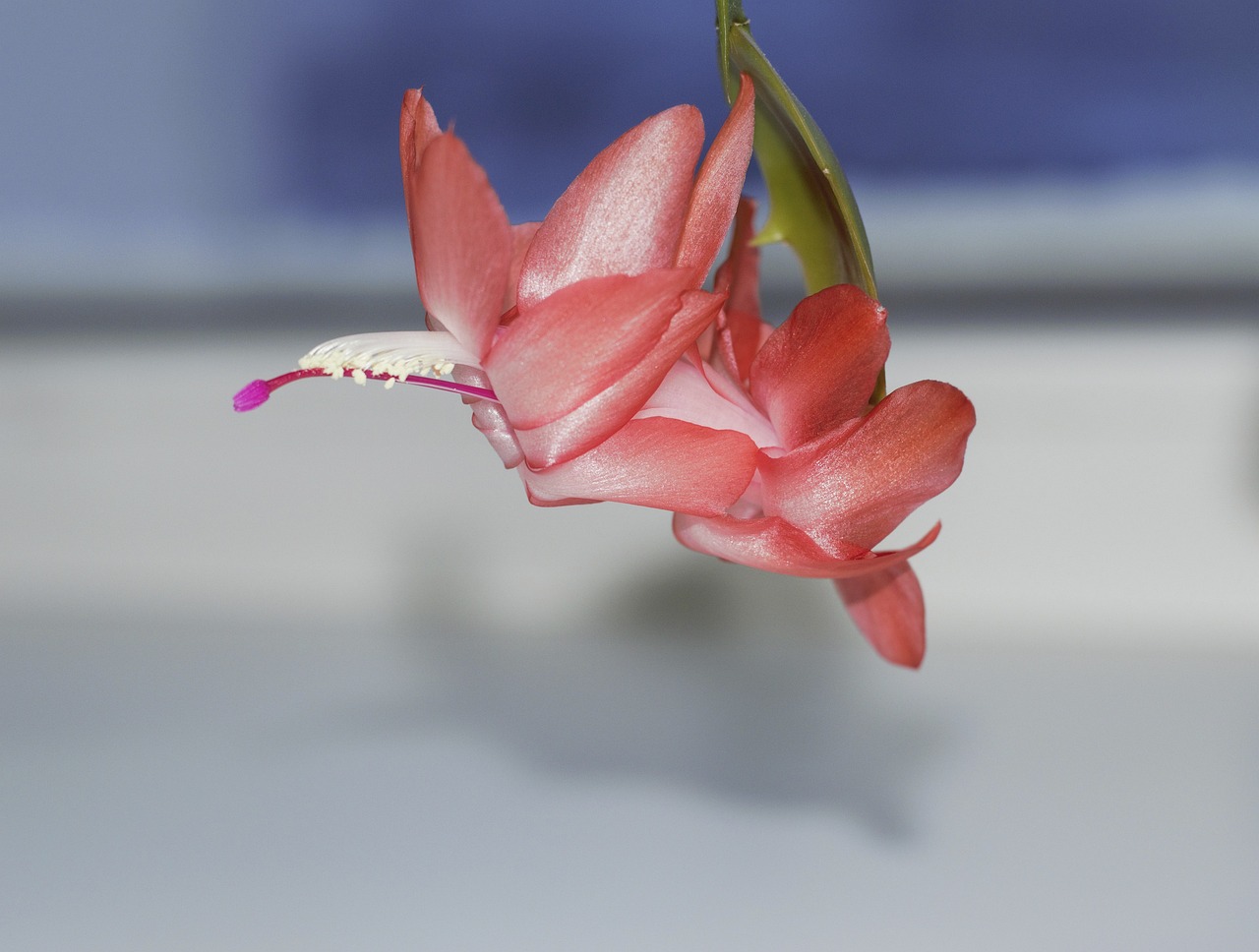
Pest Management in Indoor Gardens
When winter rolls around, many of us think that our indoor gardens are safe from pests. After all, it’s cold outside, right? But hold your horses! Pests can be just as active indoors during the winter months, and if you're not careful, they can wreak havoc on your beloved plants. So, how do you keep your indoor oasis thriving while keeping those pesky intruders at bay? Let’s dive into some effective pest management strategies that will ensure your indoor garden remains healthy and vibrant.
First things first, it’s essential to identify the common indoor pests that might invade your plants during this season. Some of the usual suspects include:
- Aphids - Tiny, soft-bodied insects that suck the sap from your plants.
- Spider Mites - These microscopic pests create fine webs and can cause yellowing leaves.
- Mealybugs - They look like little cotton balls and can be quite destructive.
- Fungus Gnats - Annoying little flies that thrive in moist soil, their larvae can damage roots.
Recognizing these pests early is crucial. Look for signs such as wilting leaves, sticky residue on your plants, or tiny webs. If you spot any of these symptoms, it’s time to take action. But what can you do to keep your indoor garden pest-free? Here are some preventive measures that can make a world of difference:
1. **Keep it Clean**: Regularly dust your plants and clean their leaves. This not only helps your plants breathe better but also makes it harder for pests to settle in.
2. **Quarantine New Plants**: If you bring home a new plant, keep it separate for a couple of weeks to ensure it’s pest-free before introducing it to your other plants.
3. **Natural Remedies**: Consider using natural pest repellents. For instance, a mixture of water and dish soap can be sprayed on affected areas to deter pests without harming your plants.
4. **Maintain Healthy Plants**: Strong, healthy plants are less susceptible to pest infestations. Make sure your plants are getting the right amount of light, water, and nutrients.
In addition to preventive measures, it’s also important to have a plan for when pests do show up. Here’s a quick table summarizing some common pests and their corresponding treatments:
| Pest | Signs | Treatment |
|---|---|---|
| Aphids | Sticky residue, curled leaves | Insecticidal soap or neem oil |
| Spider Mites | Yellowing leaves, fine webs | Increased humidity, miticides |
| Mealybugs | White cotton-like masses | Rubbing alcohol on a cotton swab |
| Fungus Gnats | Small flies around soil | Let soil dry out, sticky traps |
By implementing these pest management strategies, you can enjoy a thriving indoor garden throughout the winter months. Remember, the key is to stay vigilant and act quickly at the first sign of trouble. Your plants deserve the best care, and with a little effort, you can keep them safe from pests and ensure they flourish even when it’s cold outside.
Q: How can I tell if my indoor plants have pests?
A: Look for signs like wilting, yellowing leaves, sticky residue, or visible insects on the leaves and stems.
Q: Are there any natural remedies for pest control?
A: Yes! Solutions like neem oil, insecticidal soap, or a mixture of water and dish soap can effectively deter many pests.
Q: How often should I check my plants for pests?
A: It's a good practice to check your plants weekly, especially during the winter months when pests can thrive indoors.
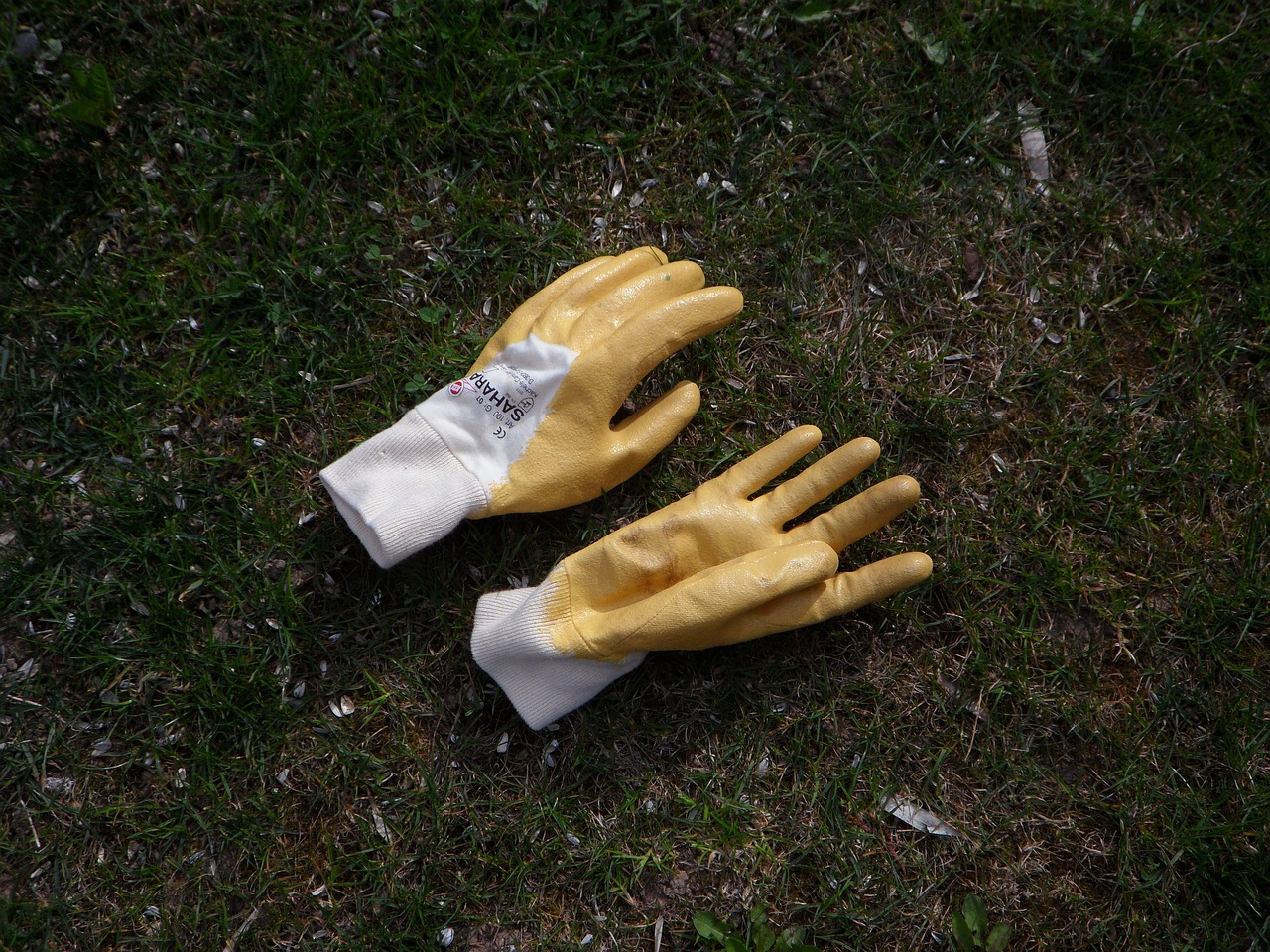
Identifying Common Indoor Pests
Indoor gardening can be a rewarding hobby, but it also comes with its fair share of challenges, especially when it comes to pests. As the temperatures drop outside, certain pests may find their way into your cozy indoor garden, seeking warmth and food. Identifying these common indoor pests early on is crucial to preventing damage to your beloved plants. Let's dive into some of the most frequent offenders and how you can spot them!
First on the list is the aphid. These tiny, soft-bodied insects come in various colors, including green, black, and yellow. They tend to cluster on the undersides of leaves and can quickly multiply if left unchecked. If you notice distorted leaves or a sticky residue (known as honeydew) on your plants, you might be dealing with an aphid infestation.
Next, we have spider mites. These minuscule arachnids are often more prevalent in dry conditions, making them a common winter nuisance. Look for fine webbing on your plants and tiny yellow or white spots on the leaves, which indicate that these pests are feeding on your plants. A quick way to check for spider mites is to shake the affected plant gently; if you see tiny specks moving, you’ve likely got a spider mite problem.
Another common pest is the mealybug. These pests are characterized by their white, cotton-like appearance and often hide in leaf axils or along the stems of plants. If you notice a sticky residue or a sooty mold on your plants, mealybugs might be the culprit. They can be particularly stubborn, so it’s essential to act quickly to remove them.
Lastly, let’s not forget about fungus gnats. These pesky little flies are attracted to moist soil and can be a sign of overwatering. If you see tiny black flies buzzing around your plants, it’s a good indication that you need to adjust your watering habits. Not only are these gnats annoying, but their larvae can also damage plant roots, leading to poor growth.
To help you identify these pests more effectively, here’s a quick reference table:
| Pest | Appearance | Signs of Infestation |
|---|---|---|
| Aphids | Small, soft-bodied, various colors | Distorted leaves, sticky residue (honeydew) |
| Spider Mites | Very tiny, often red or yellow | Fine webbing, yellow or white spots on leaves |
| Mealybugs | White, cotton-like clusters | Sticky residue, sooty mold |
| Fungus Gnats | Tiny black flies | Flies around plants, damp soil |
Being proactive is key in managing indoor pests. Regularly inspect your plants for any signs of these unwelcome guests, and don’t hesitate to take action if you spot them. Remember, a little vigilance goes a long way in keeping your indoor garden healthy and thriving!
Q: How can I prevent pests from entering my indoor garden?
A: To prevent pests, ensure your plants are healthy and avoid overwatering. Regularly inspect new plants before bringing them indoors, and maintain a clean environment by removing any dead leaves or debris.
Q: What are some natural remedies for pest control?
A: You can use natural remedies such as neem oil, insecticidal soap, or a mixture of water and dish soap to treat infestations. Always test on a small area first to ensure your plants don’t react negatively.
Q: How often should I check my indoor plants for pests?
A: It’s a good idea to check your plants at least once a week. Regular inspections will help you catch any issues early and keep your indoor garden flourishing.

Preventive Measures for Pest Control
When it comes to maintaining a healthy indoor garden during the winter months, preventive measures for pest control are essential. Pests can be particularly troublesome when the weather outside turns cold, as they may seek refuge in your cozy indoor plants. The good news is that with a few proactive steps, you can significantly reduce the risk of infestations and keep your plants thriving.
First and foremost, it's crucial to maintain a clean environment. Regularly inspect your plants for any signs of pests or disease. This means checking the undersides of leaves, stems, and soil for any unwanted guests. If you spot any pests, act quickly to remove them before they multiply. You can do this by gently wiping the leaves with a damp cloth or using a soft brush to dislodge them. Prevention is always better than cure!
Another effective strategy is to quarantine new plants before introducing them to your indoor garden. This simple step can save you a lot of trouble down the line. Keep new plants isolated for at least two weeks to ensure they are pest-free. During this time, monitor them closely for any signs of infestation. If you notice anything suspicious, you can treat the plant before it affects your existing collection.
Additionally, consider using natural pest deterrents as part of your routine care. For example, a mixture of water and a few drops of dish soap can create a gentle insecticidal spray that is effective against many common pests. Spray this solution on the affected areas of your plants, but be sure to test it on a small section first to avoid any adverse reactions. Homemade remedies can be a fantastic way to keep your plants safe without resorting to harsh chemicals.
Furthermore, maintaining optimal conditions for your plants can also help deter pests. Most pests are attracted to stressed plants, so ensure your plants are getting the right amount of light, water, and humidity. Grouping plants together can create a microclimate that helps retain moisture, but be cautious not to overcrowd them, as this can lead to poor air circulation and increased humidity, which some pests love.
Lastly, don’t underestimate the power of beneficial insects. Introducing ladybugs or lacewings to your indoor garden can help keep pest populations in check. These insects prey on common pests like aphids and spider mites, providing a natural form of pest control. Just ensure that your indoor environment is suitable for them to thrive.
By implementing these preventive measures, you can create a robust defense against pests and ensure your indoor garden remains healthy and vibrant throughout the winter months. Remember, a little vigilance goes a long way in keeping your plants happy and pest-free!
- What are the most common indoor pests? Common indoor pests include aphids, spider mites, and mealybugs. Regular inspections can help you catch them early.
- How can I tell if my plants are stressed? Signs of stressed plants include yellowing leaves, wilting, and stunted growth. These conditions can attract pests.
- Are there any natural pest repellents? Yes, mixtures of water and soap, neem oil, and diatomaceous earth can be effective natural pest repellents.
- How often should I check my plants for pests? Regular checks, at least once a week, can help you catch any potential issues before they escalate.
Frequently Asked Questions
- What indoor plants are best for winter?
Choosing the right plants is essential for a thriving indoor garden during winter. Look for varieties like snake plants, ZZ plants, and pothos that can tolerate lower light and humidity levels. These plants are not only resilient but also add a touch of green to your space, making your home feel lively even in the cold months.
- How can I provide adequate lighting for my indoor plants?
During winter, natural light can be scarce, so it's crucial to supplement it. Consider using grow lights that mimic sunlight or placing your plants near south-facing windows. Remember to rotate your plants occasionally to ensure all sides receive ample light. This way, your plants will stay healthy and vibrant throughout the season.
- What should I know about watering my indoor plants in winter?
Watering needs change in winter due to lower evaporation rates. It's important to check the soil moisture before watering. Overwatering can lead to root rot, so allow the top inch of soil to dry out before adding more water. This simple adjustment can make a world of difference in keeping your plants healthy.
- How can I maintain humidity levels for my indoor plants?
Winter air can be quite dry, which isn't ideal for many indoor plants. To combat this, consider using a humidifier, placing a tray of water near your plants, or grouping them together to create a microenvironment with higher humidity. These practices will help keep your plants happy and thriving during the dry months.
- What are the signs of low humidity in indoor plants?
Keep an eye out for signs like browning leaf tips, leaf drop, and stunted growth. If you notice any of these symptoms, it’s a clear indication that your plants might need more humidity. Acting quickly can prevent further damage and keep your indoor garden flourishing.
- How can I manage pests in my indoor garden during winter?
Pests can still be a problem indoors during the winter months. Regularly inspect your plants for signs of infestation, such as webbing or discolored leaves. Implement preventive measures like keeping your garden clean and using natural remedies like neem oil to deter pests before they become a larger issue.
- What are some common indoor pests to watch out for?
Common pests include spider mites, aphids, and mealybugs. Familiarizing yourself with these pests will help you identify them quickly and take action before they cause significant damage to your plants. Early detection is key to a healthy indoor garden!
- What preventive measures can I take for pest control?
To keep pests at bay, maintain a clean environment by regularly dusting your plants and removing dead leaves. Additionally, consider using barriers like sticky traps or introducing beneficial insects that prey on common pests. These proactive steps can help you maintain a healthy indoor garden and prevent infestations.



















